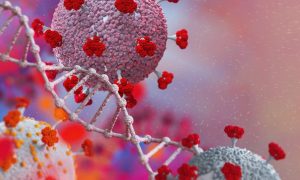When Phileas Fogg made his first trip around the world in 1873, it took him 80 days. In 2015, it only takes 27 hours to travel almost 11,000 km, to get from Narita all the way to La Guardia. The world truly is a small place today; we share everything from culture and fashion to food, art and even disease. Alpha thalassemia was once considered to be a rare disease restricted to only certain parts of the world. Today, global incidents of alpha thalassemia are on the rise. A disease once restricted to Africa, Southeast Asia, the Mediterranean and the Middle East, is now seen at an increasing frequency in North America.
Alpha thalassemia is an inherited blood disorder that reduces the production of hemoglobin, the protein in red blood cells that carries oxygen. In normal adults, hemoglobin is made up of two alpha-globin chains and two beta-globin chains. Two genes, HBA1 and HBA2, encode the components of the alpha-globin chain and specific mutations in these genes result in the different forms of this disease. Affected individuals have abnormal forms of hemoglobin, which cannot deliver oxygen efficiently around the body.
Hb Bart syndrome is the most extreme case of alpha thalassemia, where no alpha-globin is produced and affected individuals will die before or soon after birth. Individuals with HbH disease produce a reduced amount of alpha-globin and have microcytic hypochromic hemolytic anemia. These individuals have reduced numbers of red blood cells that are able to carry oxygen, and their red blood cells are smaller, paler and can rupture very easily, contributing to the characteristic symptoms of the disease: pale skin, fatigue and low hemoglobin levels. The other two forms of alpha thalassemia are known as alpha thalassemia trait (only mild anemia) and alpha thalassemia silent carrier (no symptoms).
Alpha thalassemia first originated in a few geographical locations in Africa, Asia, the Mediterranean and the Middle East. Many people in these regions are silent carriers or have the mild alpha thalassemia trait. What is common to these areas? Malaria, a mosquito-borne disease that is far more devastating than alpha thalassemia and affects hundreds of millions of people worldwide every year. Carriers of alpha thalassemia are protected from malaria, meaning that they are significantly less likely to contract malaria compared to an individual who does not carry any of the thalassemia mutations and has normal alpha-globin. The specific genetic changes to the alpha-globin genes vary around the world, but they all provide protection against malaria. This explains why the genetic changes in the alpha-globin genes were retained in malaria-affected areas of the world, even though alpha thalassemia is lethal in its most severe form.
The prevalence of alpha thalassemia has risen in North America over the past decade, to the extent that it is now often a part of routine prenatal and newborn screening. Carriers of this disease also contribute to the genetic diversity of the disease, because two carriers from different parts of the world can produce genetic combinations that have never been seen before. The risk of having a child with one of the more serious forms of alpha thalassemia (Hb Bart or HbH) is higher for a couple who both carry one or more mutations in their alpha-globin genes. While being one global community has its many advantages, it brings along with it new and unpredictable patterns of human disease. Hopefully with genetic screening programs and other diagnostic techniques, we are prepared as a community to handle these challenges.









